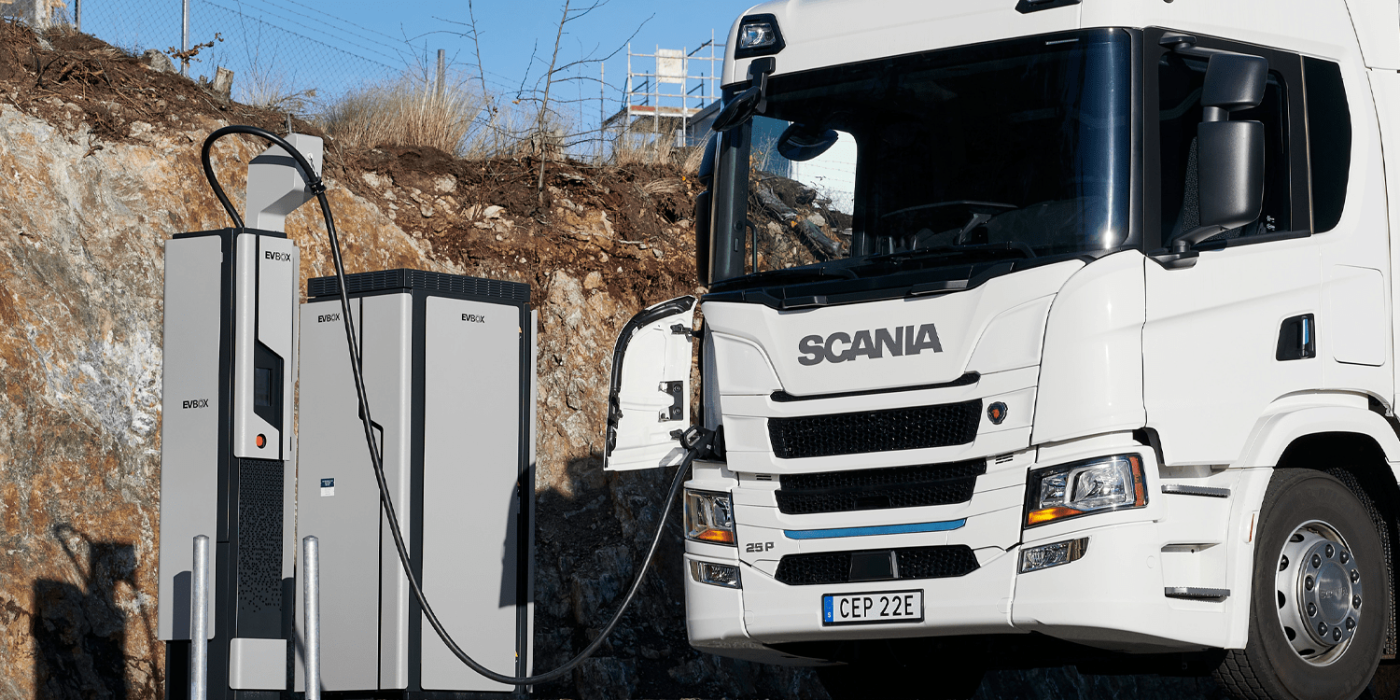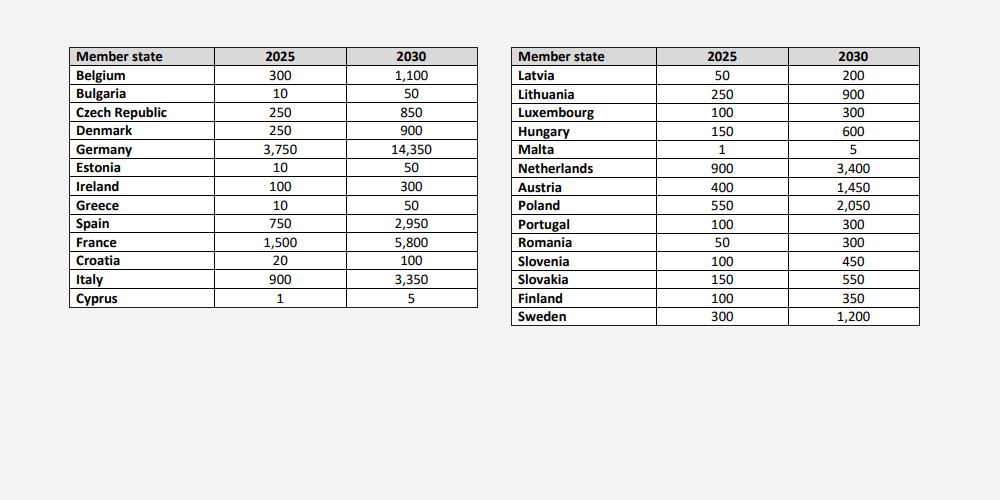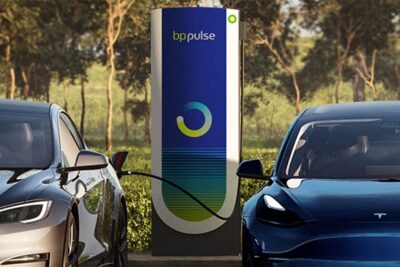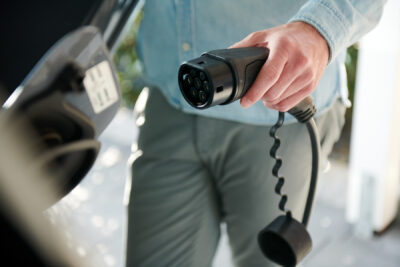ACEA and T&E want 11,000 e-truck charge points by 2025
The European manufacturers’ association ACEA and the environmental organisation T&E formulate very concrete goals for electric and fuel cell truck charging infrastructure across the EU following earlier calls and pledges.
A new letter to the EU Commission signed by ACEA members and Transport & Environment sets targets that seem more realistic than too ambitious compared to previous measures. In numbers, the aim is to install 11,000 charging points for electric trucks by 2025. The network is to grow to 42,000 charge stops for heavy-duty EVs by 2030.
In addition, around 300 hydrogen refilling stations suitable for heavy-duty vehicles should be rolled out by 2025 at the latest, with the number increasing to around 1,000 by 2030. The organisations also specify three power categories they would like to see, i.e. below 350 kW, between 350 kW and 500 kW and above 500 kW.
The expansion is necessary to stay in line with European Green Deal, says ACEA, also calling the targets ambitious. In previous communications in April 2020, ACEA had already estimated the number of charging points and H2 re-filling stations required to meet the EU’s 2025 and 2030 CO2 targets for heavy-duty vehicles. Back then, the association wanted to see some 90,000 public points installed over the next decade to enable the transition to carbon-neutral road transport. What has changed is their estimation for hydrogen trucks, back then they only foresaw the demand for just 50 fuel cell truck filling stations by 2025 and 500 by 2030.
Fast-forward to this year, and ACEA and T&E seem to respond to an industry beginning to consider hydrogen trucks on the long haul. In the new letter, ACEA and T&E want to see a mid-term review to be initiated in 2024 to provide “a sound reality-check with the actual market situation, the infrastructure roll-out and allow the adjustment of heavy-duty specific technical requirements and targets.”
The focus on long-haul had also been preceded by an earlier statement from ACEA members Scania, Daimler Truck, Volvo Group, CNH Industrial, MAN Truck & Bus, DAF Trucks and Ford Trucks in December 2020 in which they pledged to no longer produce diesel trucks from 2040. In terms of charging infrastructure, they initially said “The main concern is access to electricity grids with adequate capacity.”
The new letter repeats this call and goes on to say that the EU should ensure truck parking sites include “a grid connection that is future-proof and sufficient for future heavy-duty vehicle charging demand.” Moreover, all activities aimed at setting up charging stations for passenger cars should also get ready for or include an extension for heavy-duty vehicles. If suitable charging locations were publicly co-funded, it should be mandatory to consider a later stage extension and/or upgrade to cover heavy-duty vehicles (from CCS to MCS), the associations claim.
Concrete targets ahead of AFID revision
They also detail their other targets, incidentally ahead of the expected review of Europe’s Alternative Fuels Infrastructure Directive (AFID) this year. The signees now want the EU Commission to make the AFID “compatible” with the Green Deal and the CO2 targets and focus on zero-emission trucks. They also call for regulation rather than a directive (a similar call has been made by ChargeUp Europe for electric car charging infrastructure). A regulation requires member states to implement it, while a directive is literally a direction open to interpretation.
The letter even wants the EU to set binding targets on the European and member state level and contains a proposal for a distribution key for truck charging points in Europe. For Germany, for example, it lists 3,750 charging points by 2025 and 14,350 by 2030. That would be by far the largest share per country. France is second in line with 1,500 and 5,800 in 2025 and 2030 respectively.
The targets also consider all charging opportunities at the depot at the destination when loading and unloading at public sites in urban areas and along the highways. The new targets only exclude overnight public charging. The signees want new targets in the AFID to deploy lower power (100 kW) public overnight chargers at truck parking areas along the highways, with at least 40,000 overnight public chargers in 2030.
Looking into the document a little further it becomes clear that ACEA and T&E want the EU to refer to the TENT-T agreements for what they call “urban nodes”, which are most relevant to interurban coaches. These are charge points at airports or terminals, with the letter asking for all medium and large logistics hubs to have at least one opportunity charger (350 kW or higher) from 2025.
They want at least one high-power charging station with a minimum of 4 charging points every 100 km by 2025 and one site every 50 km by 2030, reads the letter for highway charging.
How is this charging infrastructure deployment to be achieved? ACEA and T&E mention early adopters and “meaningful incentives” to support investments in charging stations for trucks and coaches. “Support should also be granted to help transport operators adjust their operations to zero-emission trucking,” add the associations but leave further details of funding and incentives to the EU, also pointing to the adaptation of the Connecting Europe Facility (CEF).
Note that ACEA and T&E diverge in estimates on the number of battery-electric trucks that could operate with such a network of 11,000 charge points in 2025 and 42,000 in 2030; according to ACEA’s use-case calculation method, the corresponding fleet of battery-electric trucks in 2030 would be 270,000 units, whereas T&E scenarios indicate up to 520,000 units in 2030.
transportenvironment.org (letter as pdf), acea.be






0 Comments